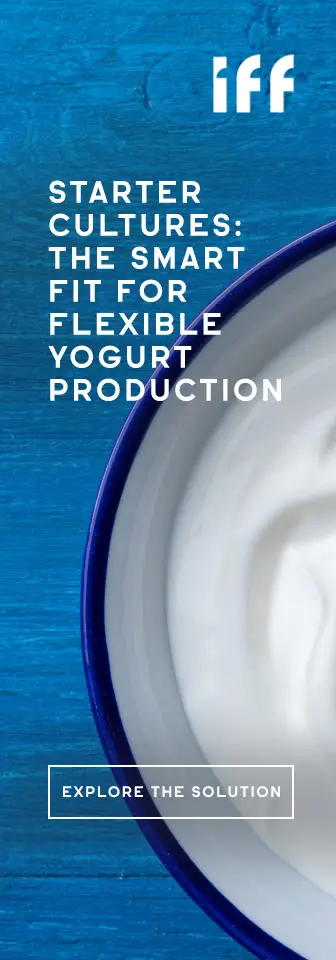“Measuring food emotion”: Kalsec and Thimus unlock sensory neuroscience to boost analysis and NPD
As consumer preferences evolve dynamically, food analysis techniques are calling for innovations beyond traditional sensory panels. Natural ingredients supplier Kalsec and Italian company Thimus are leveraging neuroscience to help formulators enhance NPD by “measuring food emotion” to correlate what people feel with what they say.
Thimus has developed T-Box — the “first ever” SaaS platform for implicit and explicit emotional and cognitive testing of F&B products. It is an electroencephalogram (EEG) headset that receives signals from the brain caused by sensory reactions to food.
By tracing product variables to reactions, the portable tool can help manufacturers with more accurate NPD and reformulation efforts.

“Sensory neuroscience can help [the industry] in several ways. The main advantage is that F&B companies now have many more data points on human response to food products than just simple answers to classic survey questions,” Mario Ubiali, founder and CEO of Thimus, tells Food Ingredients First, at the recent “Taste, Feel, Design” sensory neuroscience workshop at the Wageningen University & Research (WUR) in the Netherlands.
“The second great advantage is that these insights concern implicit processes, such as what happens emotionally and cognitively during a tasting, and people find it almost impossible to talk about. The third strong advantage is time resolution: everything we measure in the brain during a product experience is producing data at one-second intervals.”
 Mario Ubiali, founder and CEO of Thimus.“So now you can tell how much people liked something, or found it familiar, or engaging, and at “what exact point” in the experience they felt like that.”
Mario Ubiali, founder and CEO of Thimus.“So now you can tell how much people liked something, or found it familiar, or engaging, and at “what exact point” in the experience they felt like that.”
For Maria Tzoumaki, director of Discovery and Open Innovation at Kalsec, technologies such as neuroscience for taste can help both “deepen our understanding of consumer preferences and lead to faster product development lead times.”
“Thimus can provide a better understanding on the stages of experience as a consumer eats or drinks a product, and what elements they like or dislike, allowing product developers to fine-tune their flavor development to meet consumer expectations accordingly.”
Kalsec and Thimus have launched the House of Humans facility at WUR to offer access to “advanced sensory neuroscience for stakeholders’ research, product development, reformulation, and testing needs.”
“Digitizing” brain response to food
The T-Box uses EEG technology to digitize real-time brain responses to food, storing and streaming data via the cloud. It requires eight hours of training and no technical expertise.
“We transported the ability to digitize brain activity to corporate needs portably. The T-Box records brain electrical signals in the frontal part of the brain during the tasting, transmitting the raw signal to a synchronization hub. The hub is connected to a web-based software, which helps an operator to perform everything necessary to collect data during a food tasting,” explains Ubiali.
“Once the brain signal for a single person tasting is saved in our platform, we basically clean the signal, segment it according to the phases of tasting and assemble the different individual sessions into a big file. Then we do our magic: we apply our algorithms to turn brain signals into what literature calls mental states.”
 The T-Box analyzes brain signals during tasting and compares brain reaction with declarative survey responses.Mental states or “basic bricks” of emotions, enable the tool to “quantify how much a group of people liked or disliked the product, how much effort they had to make to understand it, how instinctually familiar it was to them, or engaging.” These ingredients then help determine the food’s emotion.
The T-Box analyzes brain signals during tasting and compares brain reaction with declarative survey responses.Mental states or “basic bricks” of emotions, enable the tool to “quantify how much a group of people liked or disliked the product, how much effort they had to make to understand it, how instinctually familiar it was to them, or engaging.” These ingredients then help determine the food’s emotion.
T-Box takes a few minutes to a week to give sensory analysis results, depending on the nature of the project.
Analyzing heat products
The workshop included a tasting session by Kalsec, during which participants tasted tomato-based Virgin Mary mocktail, fried Polenta chips, and chocolates with savory ingredients and plant extracts. This allowed them to explore the subtle differences the tongue and brain experience when the matrix of the product changes.
“We wanted participants to reflect on how much of what goes on their brain when they taste something is not simply a one-dimensional sensory response. They use memory, experience, and education, and are influenced by culture, epigenetic factors, etc.,” Ubiali shares.
“Secondly, we wanted to give them the gift of a great experience on pungency, thanks to Kalsec’s expertise. We wanted them to reflect on how you can design a product, even a simple one, to have very different effects depending on many formulation variables.”
For Tzoumaki, tapping neuroscience can help manufacturers overcome challenges associated with analyzing heat products, such as getting “explicit temporal profiles.”
“With traditional sensory methods, consumers may not adequately verbalize their responses using consistent, standardized language. Thimus, recording results in real-time, can provide both elements — detailed, consistent responses and the complete picture for data collection.”
 Maria Tzoumaki, director of Discovery and Open Innovation and David Johnson R&D Director, Kalsec, at the event.
Maria Tzoumaki, director of Discovery and Open Innovation and David Johnson R&D Director, Kalsec, at the event.
How reliable is it?
Food Ingredients First spoke with Dr. Ketan Ashok Ganar, post doc at TU Eindhoven and WUR and Avis Nugroho, open innovation manager at South Korean food company CJ CheilJedang who were present at the workshop, for a take on the reliability of brain-based food evaluations.
“Evaluating food products based on cognitive measurements provides real-time data, an important aspect in food sensory study. Using such methods, emotions can be measured within a span of 1/1000 of a second, making this technique very sensitive and precise,” says Dr. Ganar.
Nugroho agrees that brain-based emotional and cognitive measurements in food product evaluation can help “overcome communication barriers, such as those in traditional questionnaire-based surveys.”
“This approach could accelerate product development tailored to local preferences while providing complementary insights to existing techniques.”
Dr. Ganar suggests combining brain-based emotions with the “heart rate, body temperature and behavioral factors like facial expression analysis” to increase its reliability further.
Meanwhile, Kalsec’s Tzoumaki believes adding other technologies, such as “insect receptor chips,” could be a way to obtain more “objective” data on sensory responses.
Gauging consumer acceptance with AI
AI-powered training of the T-Box will enhance its intelligence, helping manufacturers identify ingredient combinations that drive consumer acceptance and innovation, she adds.
 Kalsec and Thimus conducted a food tasting session to demonstrate neuroscience’s role in understanding complex food tastes.“The perception and the desirability of a food or drink product is a very complex topic. Neuroscience can help with machine learning by collecting the necessary data, and AI can be an effective and quick tool to help product developers make the right decisions.”
Kalsec and Thimus conducted a food tasting session to demonstrate neuroscience’s role in understanding complex food tastes.“The perception and the desirability of a food or drink product is a very complex topic. Neuroscience can help with machine learning by collecting the necessary data, and AI can be an effective and quick tool to help product developers make the right decisions.”
Ubiali tells us Thimus is already working on AI for advanced analytics and conversational support in interpreting outcomes. “Our technology team is currently experimenting with an AI-based support chatbox for the platform’s users.”
Meanwhile, Tzoumaki addresses potential consumer concerns over the T-Box “recording their thoughts,” clarifying that it “only collects responses of specific neuron centres that relate to taste and the participant information is anonymized.”
Predicting product success
The T-Box could improve food formulation by fine-tuning flavors based on consumer reactions and predicting market success.
Dr. Garnar says the technology will “help companies understand the consumer at a fundamental level” and accordingly upgrade/improvise the product to increase its impact in the market.
The T-Box can also predict a product’s market acceptance or rejection. “We can measure “approach and avoidance,” based on a well-known neuroscience mental state metric called frontal asymmetry,” notes Ubiali. Companies can also use it for iterative product development and comparative testing.
“We see it used with different iterations of the same product evolving: think of new versions with reduced sugar, or salt and also plant-based alternatives,” he adds.
Nugroho agrees: “When combined with the right tools and a well-structured study design, Tbox technology may offer valuable predictions on a new product’s market success.”
Advancing industry adoption
Beyond technical challenges, Ubiali notes that educating corporations and individuals about the meaning and potential of this technology and approach is also difficult. “Its evangelization as such takes a lot of commitment.”
 T-box can trace product variables to reactions for NPD and reformulation efforts.When it comes to cost-effectiveness, he says the annual license fee is equivalent to the cost of conducting 4-5 traditional consumer research tests. This makes it financially beneficial for companies that regularly test products.
T-box can trace product variables to reactions for NPD and reformulation efforts.When it comes to cost-effectiveness, he says the annual license fee is equivalent to the cost of conducting 4-5 traditional consumer research tests. This makes it financially beneficial for companies that regularly test products.
Additionally, the data can provide statistically significant outcomes “with a typically fairly limited number of testers: 50 or 70 (100 for the real complex cases).”
“We are also launching (in 2025) a new pricing scheme: a fixed entry-level licensing fee, which only includes the first three projects.” Additional tests will be on a pay-as-you-go basis to control expenses.
Thimus’ neuroscience-based sensory analysis has received positive reactions from F&B players like Givaudan, La Linea Verde, and Alamance Food Company, besides Kalsec, with “more players coming on board in 2025,” Ubiali tells us.
The collaboration with Kalsec allows Thimus to prove the “direct use of our technology in R&D on formulation and extracts” and integrate the T-Box into end-user applications.
In future, Thimus plans to collaborate with some of the “top ten” F&B global players, pioneers in indoor farming and “one of the most illustrious academic institutions in culinary,” he concludes.












